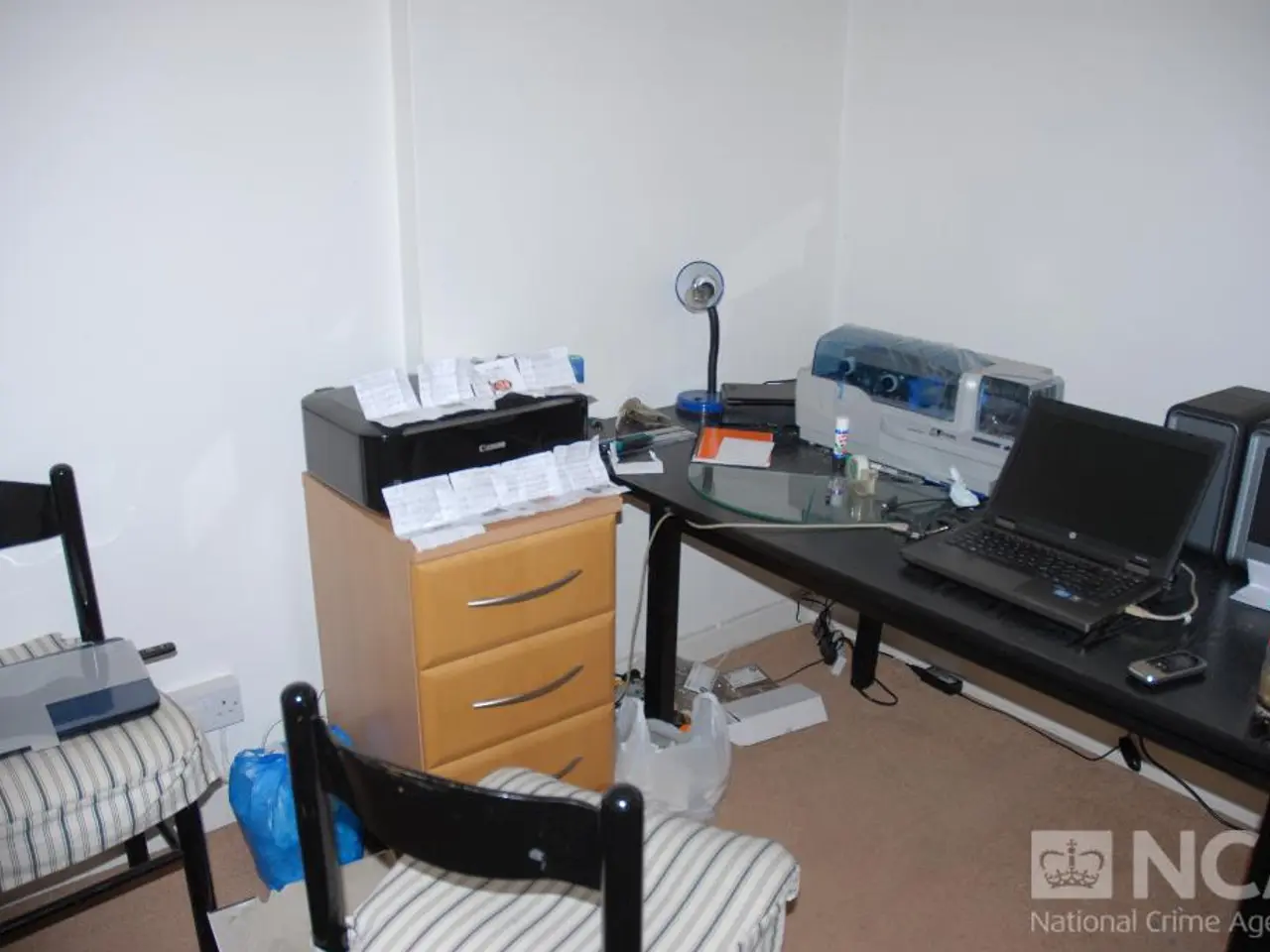Title: Securing Digital Assets in Remote Teams: Practical Tips and Strategies
Remote work has its benefits, but it also presents a significant risk: the safety of digital tools, information, and systems. Cybercriminals are taking advantage of remote arrangements, launching phishing attacks, ransomware, and other online threats targeted at individuals and businesses. To safeguard your team and maintain a secure remote setup, consider these practical data protection measures.
Challenges of Cybersecurity for Remote Teams
Working from home often results in using non-work-assigned technology, such as personal smartphones for work purposes or connecting to public Wi-Fi. Despite being five years removed from the global pandemic that forced companies to transition to a primarily remote setup, CISOs still cite remote work as a major hurdle to their cybersecurity efforts. Highlighting the importance of every team member adhering to and upholding cybersecurity policies.
Common Cybersecurity Weaknesses for Remote Workers
Phishing Schemes
Cybercriminals send spam emails or messages with the intention of stealing credentials or other sensitive information. By impersonating IT entities and requesting password resets with links, they exploit user trust.
Weak Passwords
The use of common or reused passwords across different accounts poses a risk. This habit makes it easy for cybercriminals to gain access to accounts by guessing or decoding the password.
Potentially Unsecured Wi-Fi
Using public Wi-Fi found in cafés, libraries, and hotels could provide hackers with a way to obtain sensitive information. Without encryption, the connection is vulnerable, making it easier for hackers to intercept data.
Outdated Software
Not applying software updates leaves employees' devices open to known cyber attacks. Since these devices often contain work-related information, an attack could have devastating consequences not only for the workers but also for their companies.
Protecting Your Remote Team
1. Deploy Strong, Unique Passwords
Encourage your team to create complex, alphanumeric passwords with a mix of upper- and lowercase letters, numbers, and symbols. Emphasize the importance of using a password manager to create strong passwords and avoid writing them down or disclosing them through email or messaging platforms.
2. Activate Two-Factor Authentication (2FA)
Implement this additional security layer to ensure users provide a second form of verification when accessing systems. This could involve receiving a code via text message or a mobile app to ensure unauthorized users cannot bypass typical password protection.
3. Avoid Using Public Wi-Fi That Does Not Provide Encryption
Public Wi-Fi provides a convenient connection, but it carries risks. To significantly improve the safety of your connections, recommend using a virtual private network (VPN). Alternatively, utilize a mobile hotspot or opt for a secure and encrypted connection provided by your company.
4. Regularly Update All Devices and Software
Updates typically patch security holes that protect against known threats. By installing these updates regularly, you ensure your devices remain safeguarded against cyber vulnerabilities.
5. Be Wary of Phishing Fraud
Avoid clicking on links received from unknown sources. Urgent-sounding emails should be analyzed cautiously to avoid being tricked into disclosing sensitive information or succumbing to a phishing attack.
6. Protect Your Devices
Secure devices with strong passwords and, where possible, enable biometric authentication, such as fingerprint or facial recognition. In the event of lost or stolen devices, specify remote wipe features to protect sensitive information.
7. Secure Cloud Services
Enable multi-factor authentication on cloud services, along with appropriate sharing settings. Keep documents private and avoid sharing sensitive information via unsecured links.
8. Maintain a Backup of Data and Systems
Regular backups allow for file recovery in the event of ransomware attacks or hardware failures. Encrypt backup drives and consider storing backups on secure cloud platforms, ensuring your data can be restored with minimal disruption.
9. Engage in Regular Cybersecurity Training
Periodic training can educate employees on recognizing phishing attempts and implementing appropriate cyber hygiene practices.
10. Work with Information Technology Teams
Participate in migrating secure systems, training users, and developing information security policies with relevant IT stakeholders to create a company-wide cybersecurity strategy.
Protecting digital assets is not just an IT department activity — it is a shared responsibility among all team members. Employees' contributions in using strong passwords, avoiding phishing attempts, and practicing secure internet habits contribute to the overall safety of the organization. Keep your team informed about best cybersecurity practices to safeguard remote work environments.
Ashok Manoharan, the Chief Information Security Officer (CISO) at a large tech company, emphasizes the importance of every team member adhering to cybersecurity policies, acknowledging that remote work remains a major hurdle in their cybersecurity efforts five years after the global pandemic.
In their efforts to enhance remote work cybersecurity, Ashok Manoharan and his team recommend implementing two-factor authentication (2FA) to ensure users provide a second form of verification when accessing systems.







